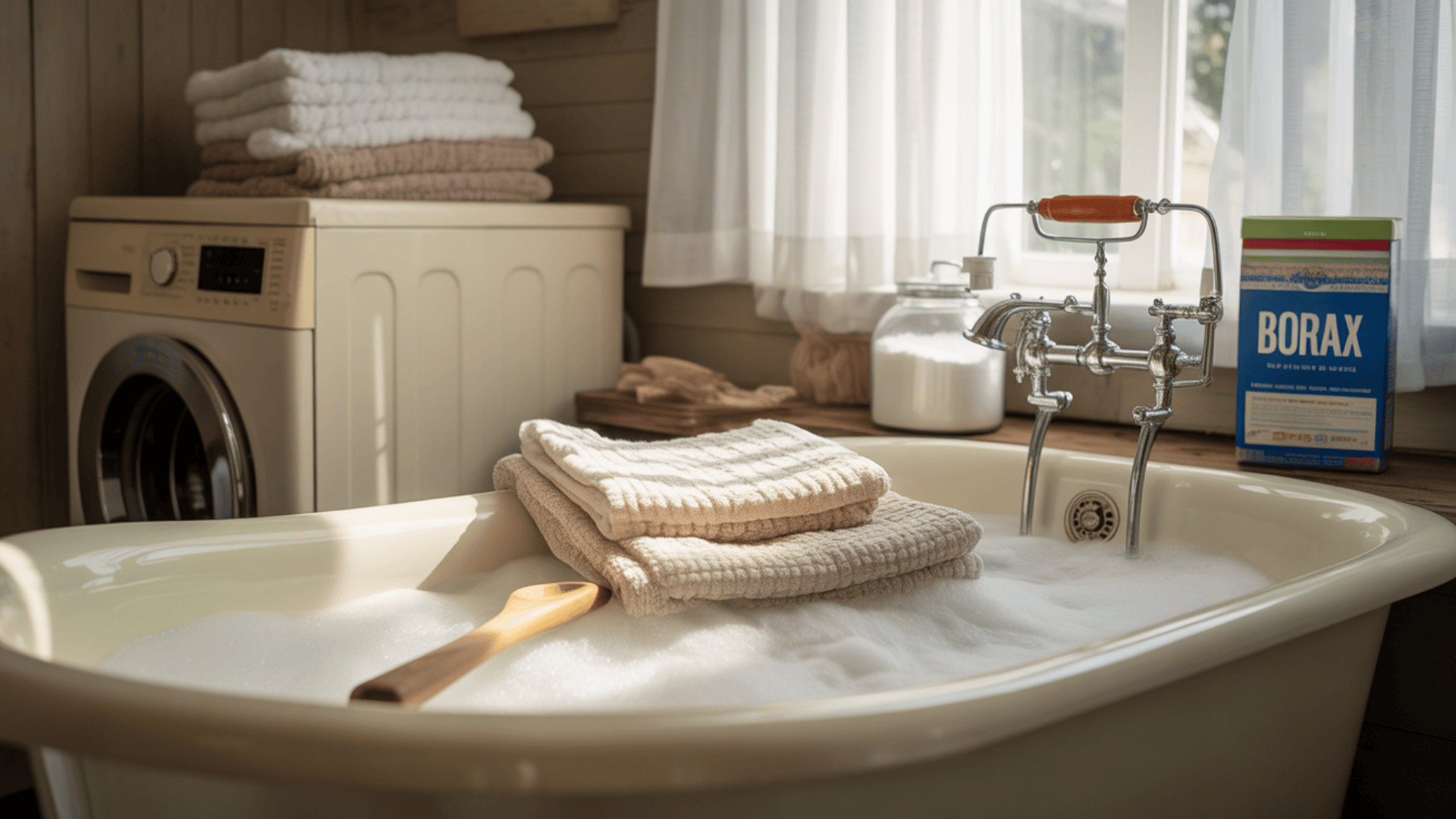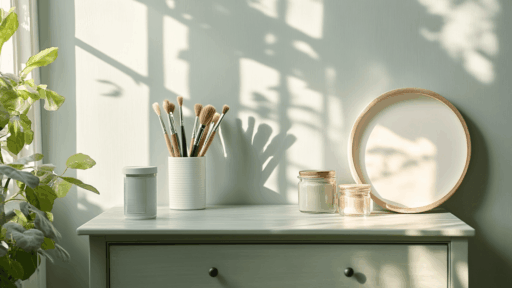Smelly towels or sticky sheets can be hard to deal with.
You wash and dry them, but your towels still smell musty, or your gym clothes feel stiff.
It’s frustrating, especially when you follow all the washing steps.
Over time, soaps, softeners, sweat, and hard water leave behind a thick layer of gunk that regular washing can’t fix.
That’s where laundry stripping steps in.
It’s a smart soaking method that pulls out all the hidden stuff stuck in your clothes.
Using hot water and strong cleaners, it lifts away layers of old detergent, body oils, and other buildup.
This guide shows you exactly how to do it, with clear steps and no confusion.
You’ll know what you need, what to soak, and what to skip.
By the end, you’ll see if it’s right for you and how to keep laundry feeling fresh longer.
What Is Laundry Stripping?
Laundry stripping is a deep cleaning soak that helps clear out leftover buildup from fabrics.
It targets what regular washing leaves behind: old soap, softener, sweat, and hard water minerals.
These things stay trapped in thick fabrics like towels and bedding, making them smell or feel off.
To strip laundry, you soak items in hot water with three basic ingredients: powdered detergent, borax, and washing soda.
This mix penetrates the fabric and breaks down residue that has been stuck for months (or years).
It’s like giving your laundry a reset.
People started using this method more after seeing the dark water left behind.
It’s shocking, but it shows that it’s working.
It’s backed by how alkaline cleaners react with dirt and oils, helping them float out of the fabric.
Stripping will not fix worn-out clothes or remove stains, but it will clear out the gunk that makes clean items still feel dirty.
When and Why You Should Try It?
If your laundry feels clean but smells bad or doesn’t perform the same, you may need to strip it.
This method is best when regular washes don’t solve the problem.
Here are signs that your fabrics could use a reset:
- Towels feel stiff and don’t dry you well
- Sheets seem sticky or heavy even after washing
- Workout wear still smells sweaty
- Cloth diapers hold odor
- You use fabric softeners often
- Your water is hard and leaves mineral spots
- Items look dull or have a gray tint
These are all clues that the detergent or softener is stuck in the fabric.
If you’ve tried washing more or changing products and nothing helps, stripping might bring those items back to life.
It works especially well on fabrics that get lots of use or sweat.
Ideal Fabrics or Items (and What to Avoid)
Laundry stripping works best on items that can handle heat and strong cleaning.
These items often build up the most residue.
Here’s a helpful table. Be sure to read the explanations below for better guidance.
| GOOD FOR STRIPPING | NOT GOOD FOR STRIPPING |
|---|---|
| Towels, sheets, pillowcases | Silk, wool, lace |
| Blankets, bathrobes | Hand wash or cold wash only |
| Workout clothes, cloth diapers | Bright colors that may bleed |
Why These Work:
Items like towels and bedding are thick, absorbent, and used often.
They collect oils from skin, soaps, and softeners.
Because they’re made of strong fabrics like cotton or blends, they hold up well in hot water.
Stripping helps them regain their full softness, smell, and absorbency.
Why Avoid:
Silk, wool, and lace can shrink, tear, or lose shape in heat or with harsh cleaners.
Items that say “hand wash only” often can’t handle soaking. Bright colors might bleed, leaving patchy spots.
If in doubt, always check the care label first and avoid putting delicate or stretchy fabrics in the dryer.
Know Before You Strip: What Works and What Doesn’t
Laundry stripping is a smart way to refresh your towels, bedding, and workout clothes when they start feeling heavy, smelly, or coated with buildup.
It can make fabrics softer and more absorbent, but it’s important to know what it can and can’t fix before you start.
| WHAT IT CAN DO | WHAT IT CAN’T DO |
|---|---|
| Pull out old soap, sweat, and softener buildup | Remove set-in stains like grease or ink |
| Restore softness and better absorbency in towels | Repair thin or damaged fabrics |
| Help remove musty or sour smells | Prevent buildup if you keep using too much detergent/softener |
| Make older items feel lighter and fresher | Make colors bright again if they’ve already faded |
Laundry stripping isn’t magic. It’s like pressing the reset button.
It helps if your items are dull because of buildup. If they’re worn out or stained, you’ll need other solutions.
Tools & Ingredients for the Best Results
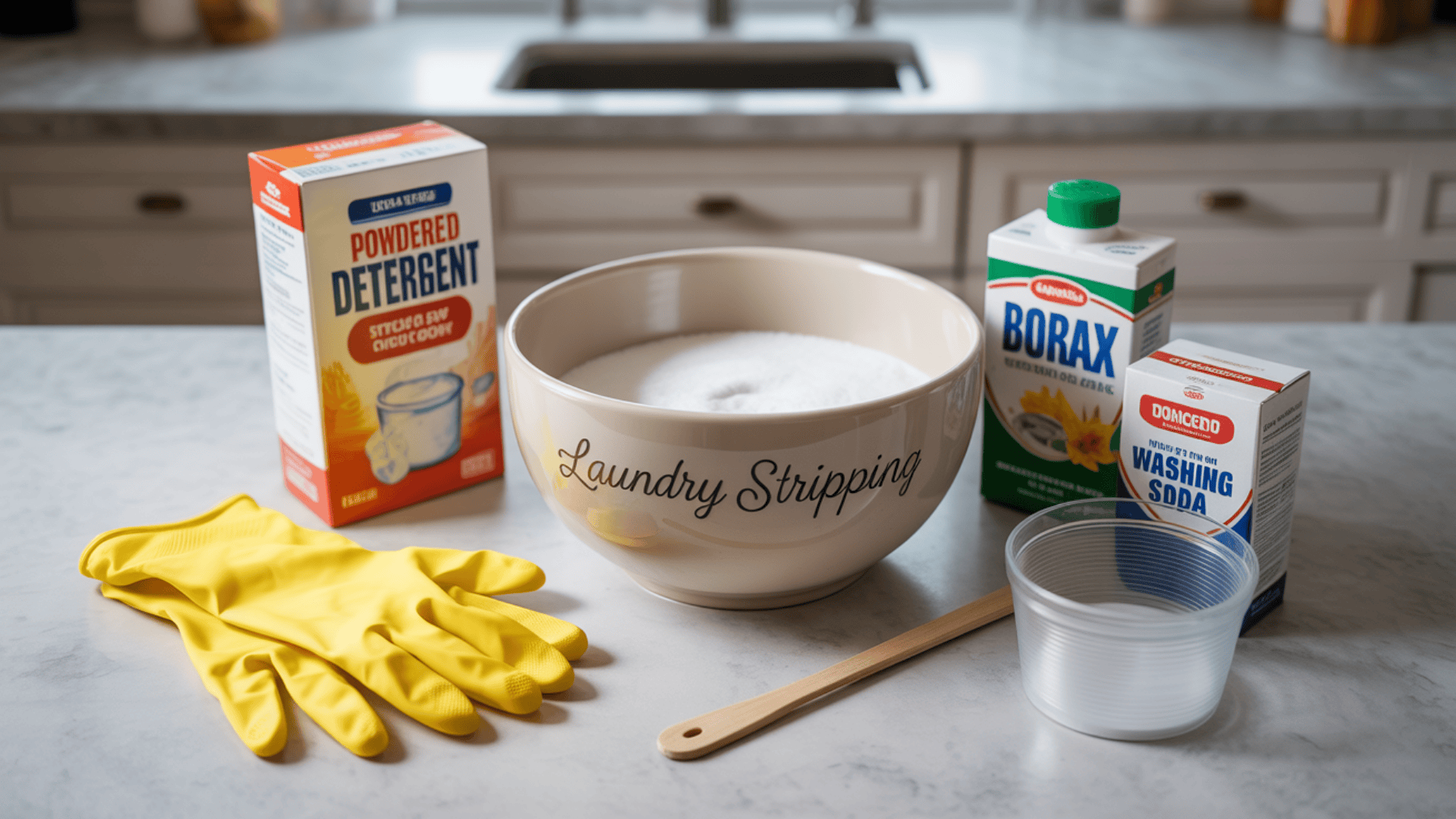
Before you start, make sure you have everything ready. Here’s your list:
Large soaking tub or bathtub
Hot water from the tap
1 cup powdered laundry detergent
½ cup borax
½ cup washing soda
A large spoon or a stick for stirring
Washing machine (with rinse option)
Dryer or drying rack
Optional: gloves (hot water may feel sticky)
Make sure the detergent is powdered.
Liquid won’t give the same effect because it doesn’t react the same way in the soak.
The rest of the ingredients help lift the buildup and trap it in the water.
An In-Depth Step-by-Step Guide to Laundry Stripping
Laundry stripping might sound tricky, but it’s actually easy when you follow the right steps.
These steps break it down into simple actions anyone can do at home.
STEP 1: Prep Your Space
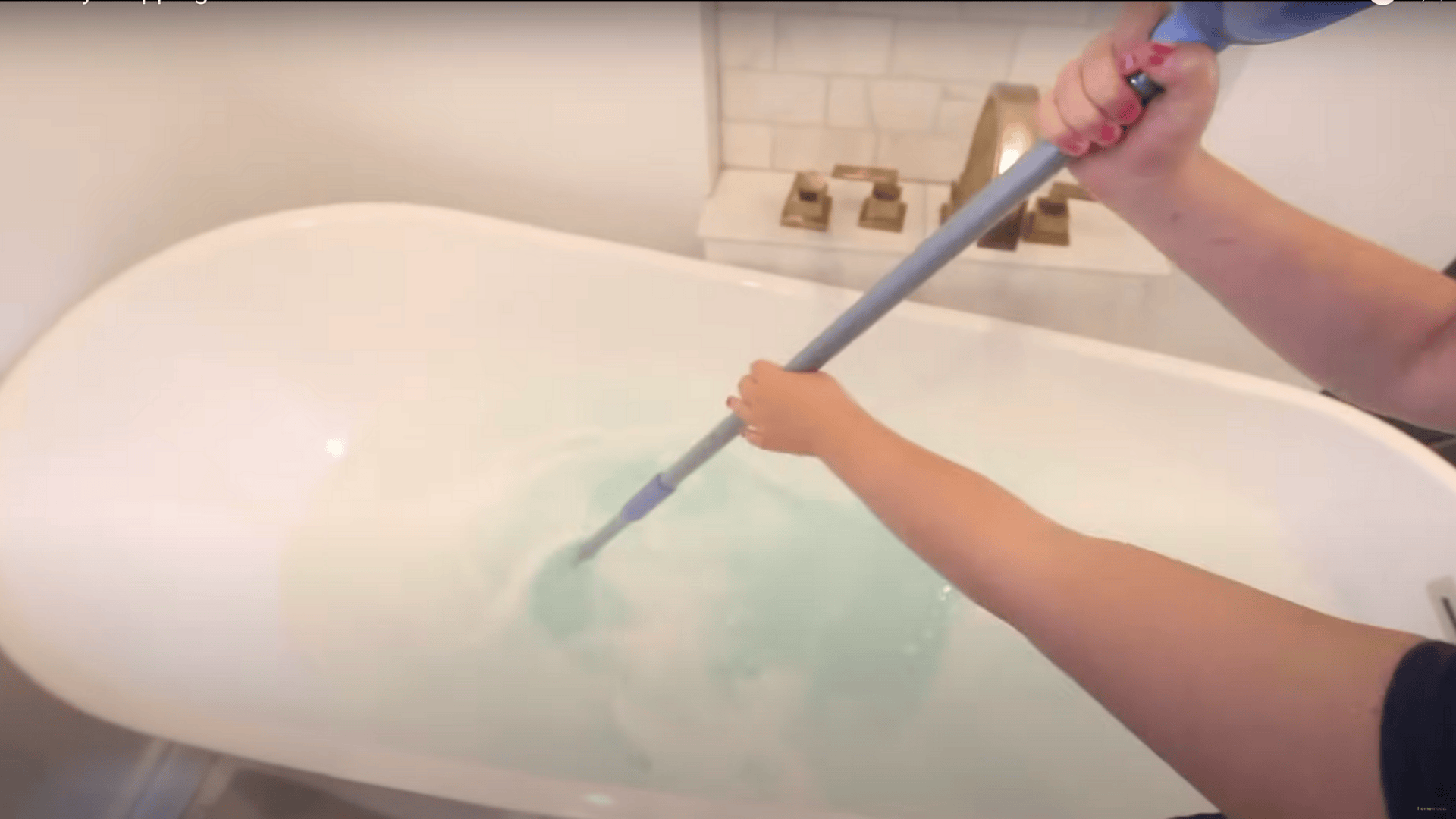
Fill a bathtub or a large tub with hot water.
The hotter the better, but safe for you to work with.
Make sure there’s enough water to cover your laundry items fully.
STEP 2: Add Cleaning Mix
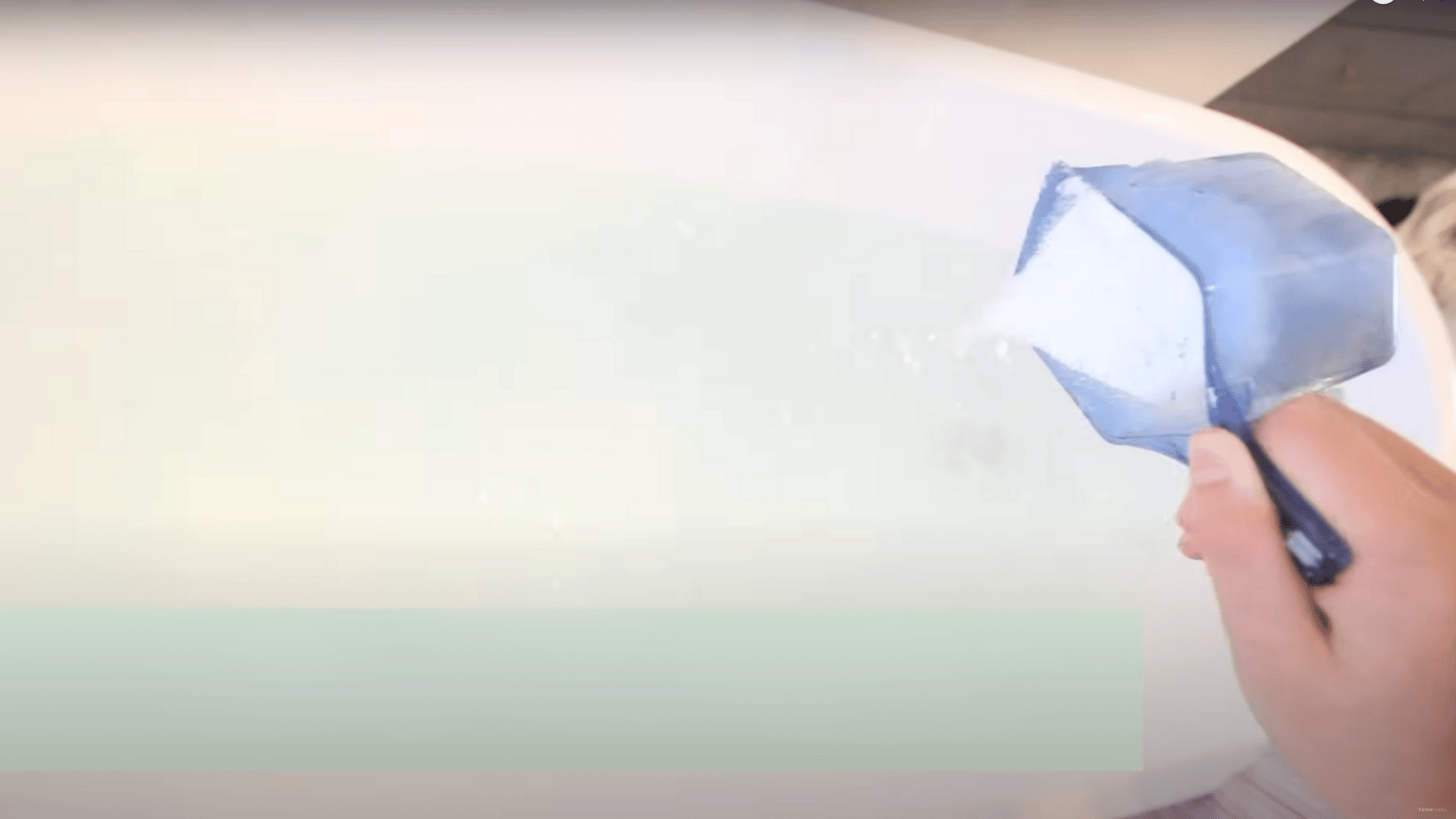
Pour in 1 cup powdered detergent, ½ cup borax, and ½ cup washing soda.
Stir well until the powders dissolve.
Use a spoon or wear gloves to protect your hands.
STEP 3: Add Laundry
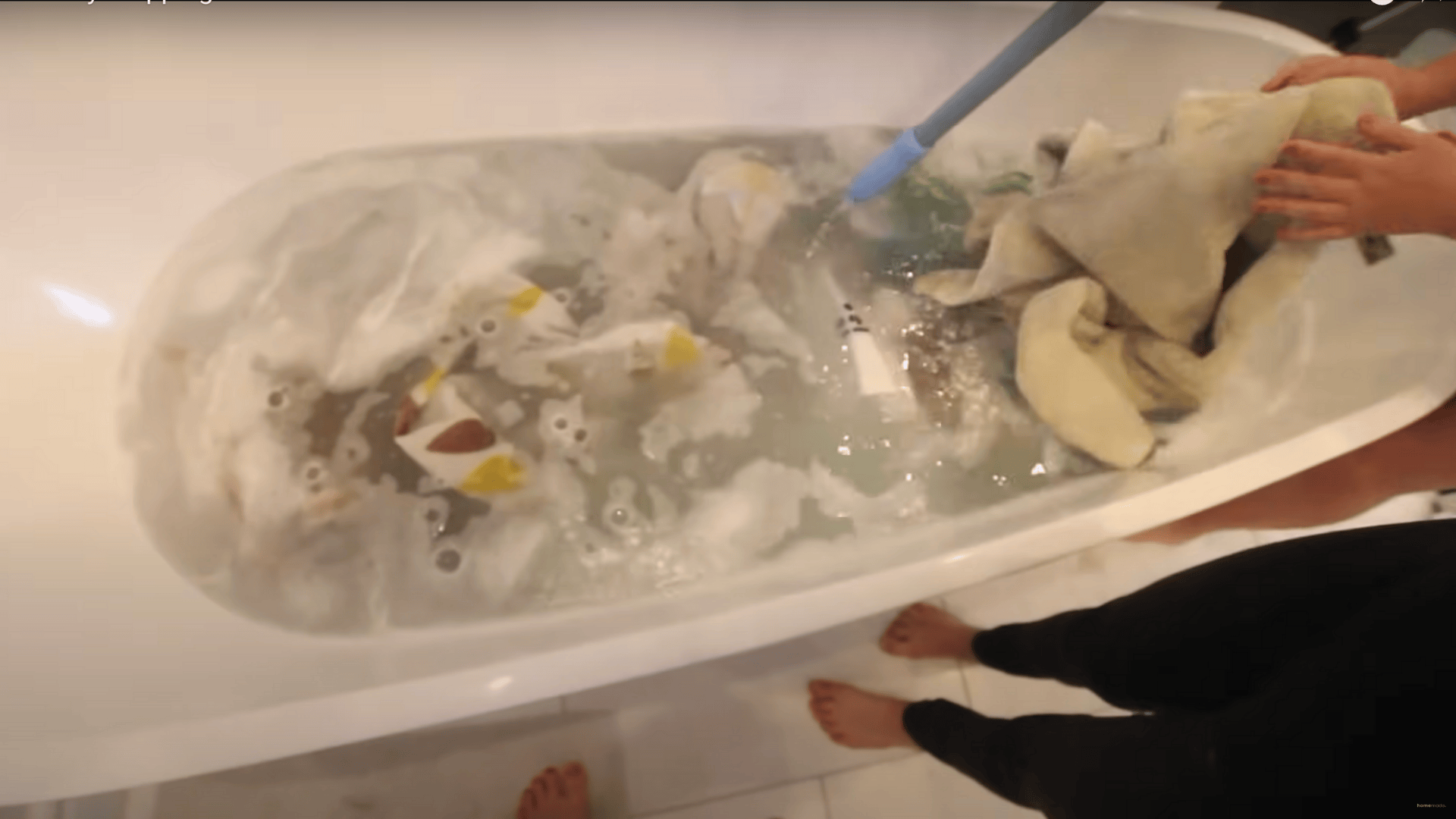
Place clean items into the tub.
Press them down so they’re fully soaked.
Separate lights and darks if needed, dye may leak into the water.
STEP 4: Soak 4–5 Hours
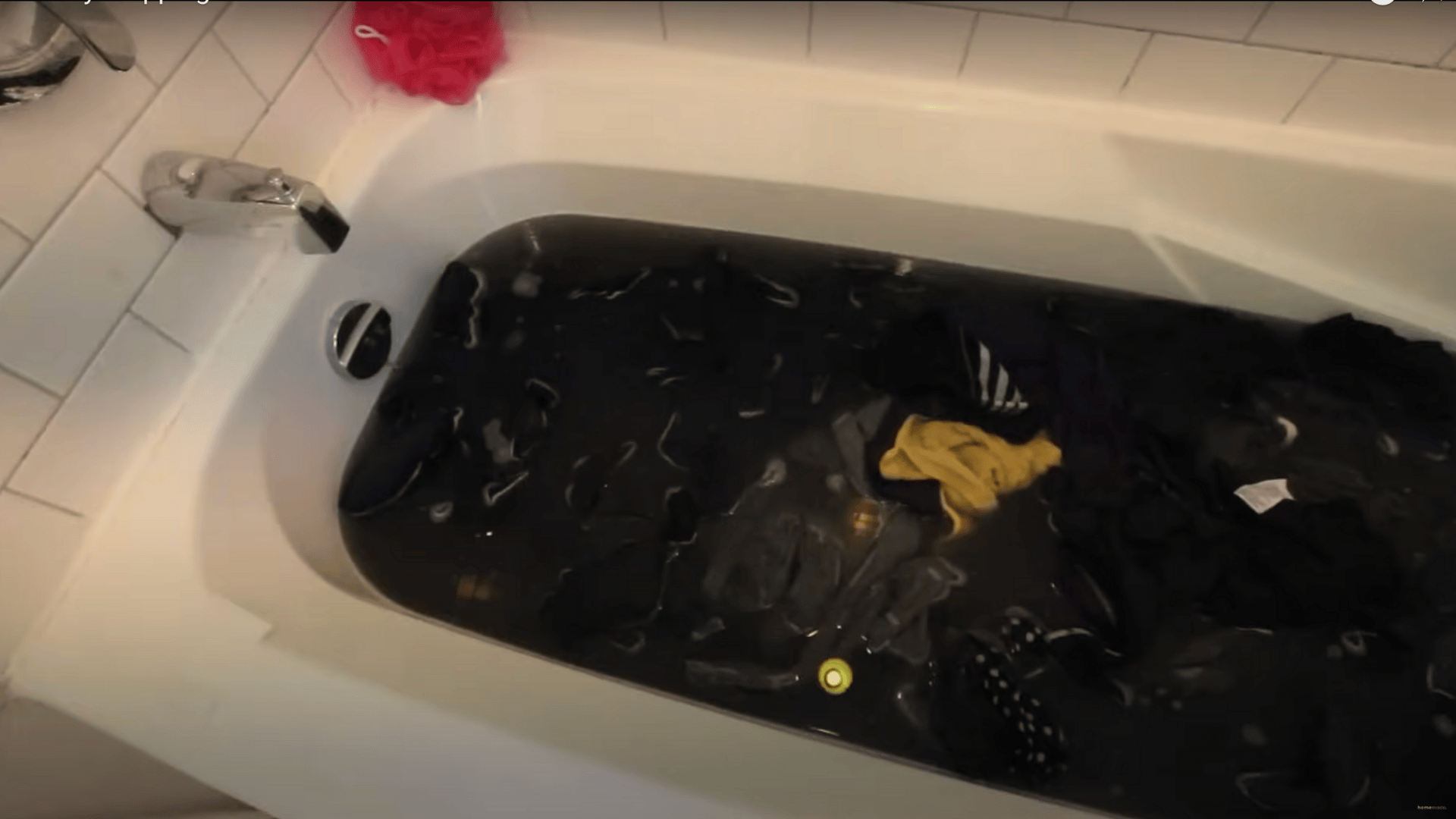
Let items soak for several hours.
Stir gently every hour to loosen trapped buildup.
You’ll see the water get dark; that’s normal.
STEP 5: Rinse Out
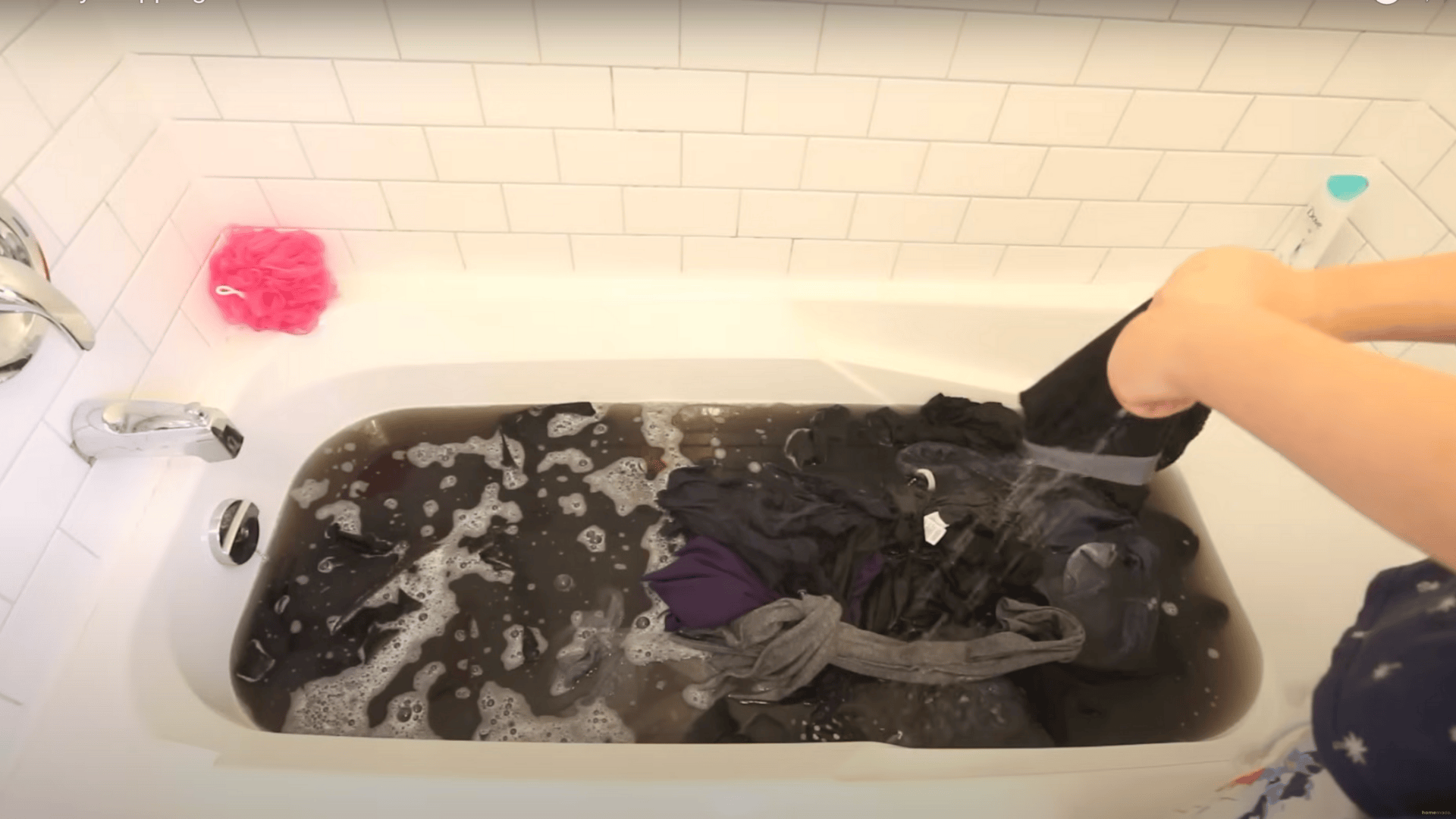
Remove the laundry and squeeze out extra water.
Place it in your washer and run a rinse-only or heavy-duty cycle with no detergent.
STEP 6: Dry Completely
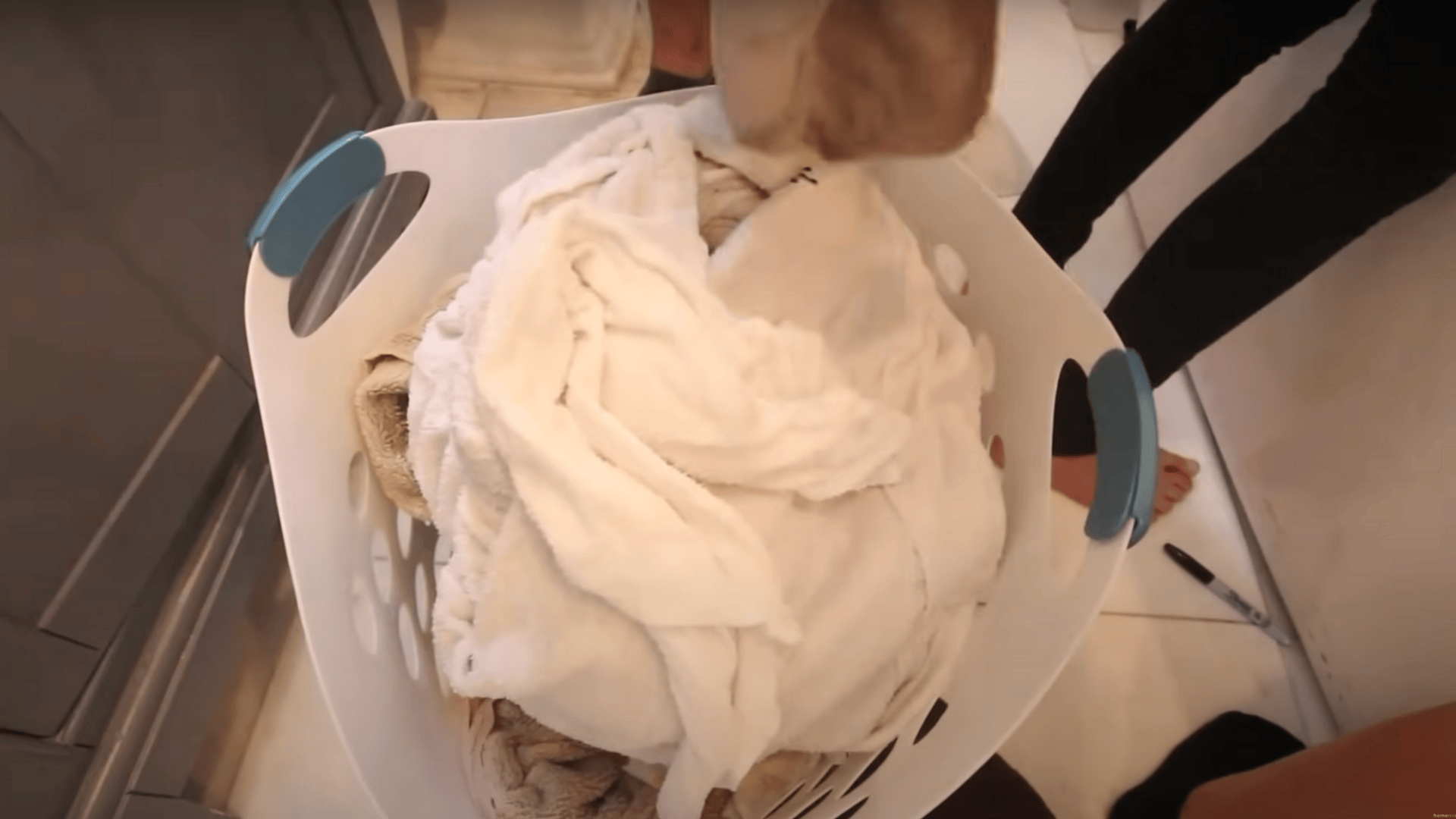
Dry your items just like you normally would after a regular wash.
You can use a tumble dryer if the care label says it’s safe, or hang them up to air dry.
Always check the label first to avoid shrinking or damaging the fabric.
Drying the right way helps keep your items soft and in good shape after stripping.
STEP 7: Feel the Change
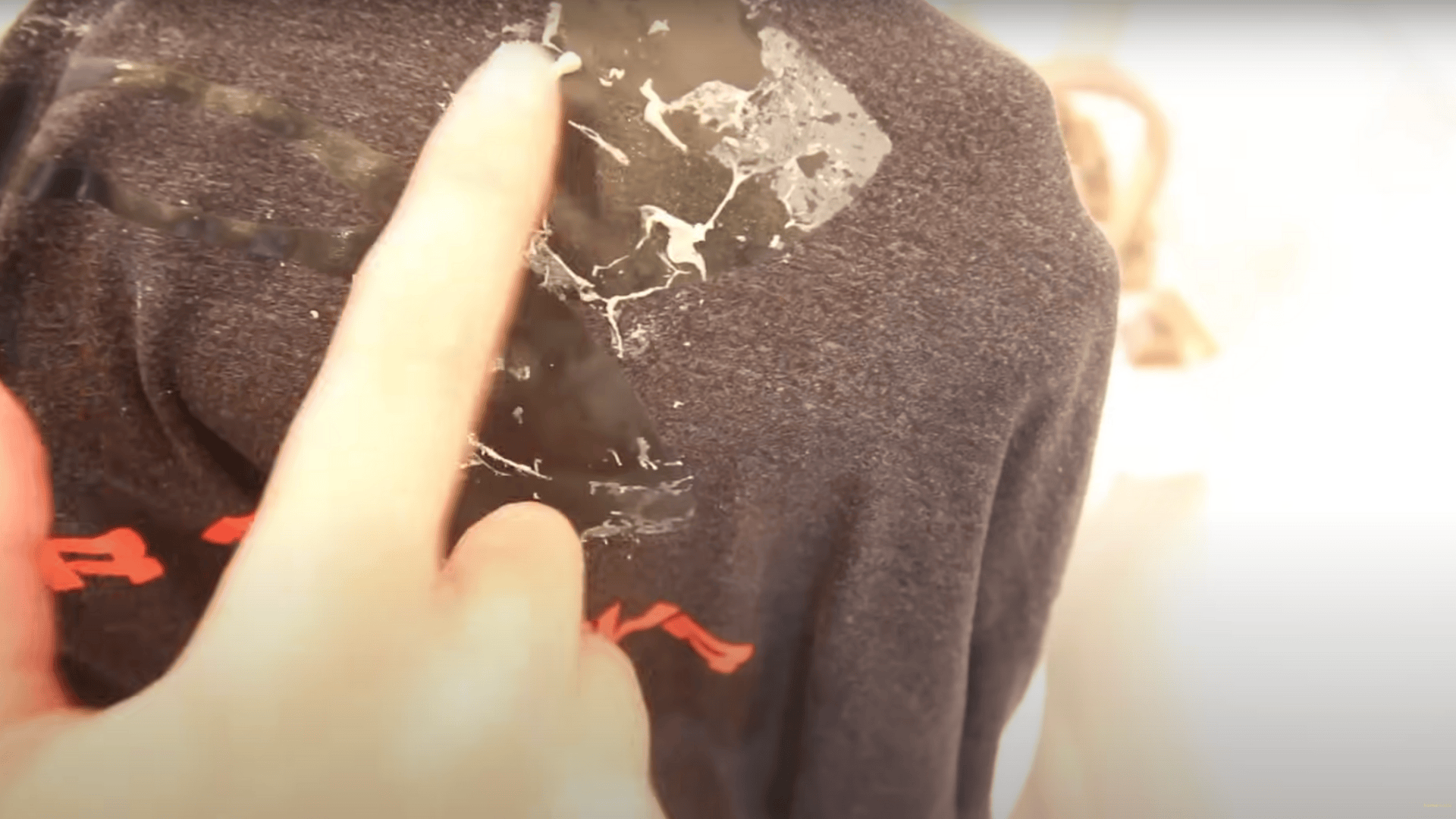
Once dry, your laundry should feel lighter, softer, and cleaner.
Towels will soak up water better, and workout wear won’t hold bad smells.
Myth bust: That brown water? It’s not always dirt. It’s mostly built-up soap, fabric softener, and dyes.
Watch How It’s Done: Laundry Stripping Recipe!
Check out a quick video demonstration by Jennifer Tryon to see the process in action!
Common Laundry Stripping Mistakes to Avoid
Laundry stripping works best when done right.
But some simple mistakes can cause poor results or even damage your clothes. Keep these points in mind:
- Overcrowding the tub: If items are crammed together, the water and cleaner can’t reach every surface. Soak fewer pieces at a time.
- Using cold or lukewarm water: Heat is key. Cold water won’t dissolve the powder or break down the buildup properly.
- Skipping care tags: Some fabrics can’t handle heat or strong cleaners. Always check tags before soaking.
- Using the wrong detergent: Only use powdered detergent. Liquid options don’t react the same way.
- Skipping the rinse cycle: After soaking, always do a full rinse. This clears out anything still left in the fabric.
A good rule is to go slow and read labels first. Stir the water every hour to help the process work better.
Professional Tips & Expert Advice
If you want to make stripping safer and more effective, here are a few expert-backed tips and tricks:
- Stick with a 1:1:2 ratio (borax, washing soda, detergent).
- Soak until the water cools—usually 4 to 5 hours.
- Stir hourly with a spoon or gloved hand to keep things moving.
- Avoid stripping too often—it’s not a weekly thing.
- Try vinegar in the rinse for regular upkeep in between big soaks.
A little extra care goes a long way.
By following these smart tips, you’ll keep your fabrics fresh and buildup-free without overdoing it.
“Always check care labels and avoid stripping anything that can’t handle hot water or strong cleaners,” says Carolyn Forté of the Good Housekeeping Institute.
How to Keep Results Lasting Longer?
You don’t want to strip your laundry every month.
Here’s how to keep your fabrics fresher for longer:
- Use less detergent, more isn’t better
- Skip fabric softener; use vinegar in the rinse instead
- Wash towels and sheets in hot water (if tags allow)
- Clean your washing machine once a month, wipe the drum, and run a cleaner cycle
- Don’t overload your washer; crowded loads don’t rinse well
These small changes go a long way.
They reduce buildup and help your fabrics last longer between stripping sessions.
Conclusion
Laundry stripping gives towels, sheets, and other sturdy fabrics a fresh start.
It clears out deep-down buildup that normal washing can’t reach.
With just a few basic ingredients and a bit of time, you can restore softness, absorbency, and freshness.
It’s not for every load, but when done right, it makes a big difference.
Your laundry will feel better, smell cleaner, and even look brighter.
Give it a try on just one load.
You’ll be surprised by what’s been hiding in your “clean” clothes all along.
For more cleaning tips, take a look at the following comprehensive guides:


